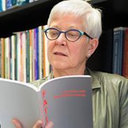The effect of anti-TNF-α vs. DMARDs on fatigue in rheumatoid arthritis patients.
Palavras-chave
Resumo
OBJECTIVE
Fatigue is experienced frequently by patients with rheumatoid arthritis (RA). Fatigue may be caused by high levels of pain and disease activity in RA but can remain present while disease activity is moderate to low. It is not clear whether RA patients receiving anti-tumour necrosis factor (TNF) treatment reach lower levels of acute fatigue than RA patients receiving disease-modifying anti-rheumatic drug (DMARD) treatment. The aim of our study was to analyse whether, in patients with RA, the effect of anti-TNF on fatigue is greater than the effect of DMARD treatment.
METHODS
Sixty-seven RA patients receiving anti-TNF treatment and 104 RA patients receiving DMARDs were included. All patients were on stable treatment for at least 6 months prior to baseline measurement. Fatigue was measured monthly over 1 year with the fatigue severity subscale of the Checklist Individual Strength (CIS-fatigue). The association between persistent severe fatigue and medication group was analysed using multiple linear regression including confounders.
RESULTS
In the anti-TNF group the mean (SD) level of persistent fatigue was significantly higher than in the DMARD group [32.2 (11.4) vs. 28.3 (10.9), p = 0.025] and more patients experienced persistent severe (CIS-fatigue score ≥ 35) fatigue (42% and 27% respectively, p = 0.043). However, when correcting for age, disease activity, haemoglobin, treatment duration, pain, physical disability, and clinical depression, medication type seemed to influence neither the mean level of persistent fatigue (p = 0.251) nor the percentage of patients with persistent severe fatigue (p = 0.745).
CONCLUSIONS
When taking into account probable confounders including disease activity, medication type did not influence persistent fatigue in RA patients. It seems that, besides its anti-inflammatory effect, anti-TNF has no complementary effect on persistent fatigue.



